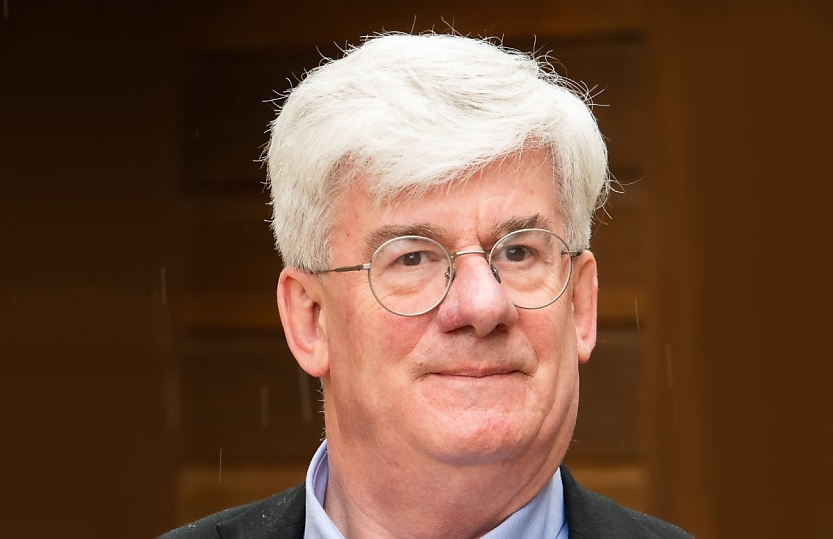GST distribution reform: ‘Worst’ public policy decision this century

“Egregious” changes to the federal government’s GST distribution to states and territories will cost $40 billion over 12 years, expert says.
The federal government’s decision to introduce a minimum state and territory goods and services tax (GST) distribution allowance represented the “worst Australian public policy decision of the 21st century”.
Saul Eslake, principal at Corinna Economic Advisory, did not stop there. He added, the trouble is only worsened by the fact that so few Australians seem to understand the system in the first place.
Even fewer know where it went wrong. His recent Australian National University policy brief was “an attempt to correct that”.
Every year, state and territory leaders decry a faulty GST distribution system, one which many believe unjustifiably benefits Australia’s most resource-rich, westernmost state. And, every year, nothing changes.
The federal government distributes money to the states and territories to allow them to provide public services of a similar quality.
The principle behind this process is referred to as “horizontal fiscal equalisation” and, according to Eslake, Australia has taken it “further than any other federation in the world”.
Considering GST distributions to states and territories is the single biggest drain on the federal wallet, getting it right matters.
And since 2018, we’ve been getting it very wrong, said Eslake – a mistake which will cost the country nearly $40 billion over the 12 years to 2030.
Equalisation was the brainchild of the Commonwealth Grants Commission which – following a too-close-for-comfort 1933 Western Australian secession referendum – sought to apportion federal aid in a way that closed the gap between lower and higher taxing states and territories.
The result benefited Western Australia substantially more than a grants system which distributed financial support on a per capita basis. This was justified on the basis that Western Australia’s revenue raising power was weaker and that public services were more costly to deliver to so widespread a population.
And it worked, said Eslake, until the demand for Western Australia’s natural resources skyrocketed from around 2004, first with iron ore, and then on to LNG, nickel, aluminium, lithium, and so on.
Western Australia’s per capita gross state product has increased from approximately 7 per cent above the national average to over 60 per cent, since the turn of the century.
“Throughout the 20th century, the ‘fiscally strongest’ state was either Victoria or New South Wales. For most of the 21st century thus far, it has been Western Australia,” said Eslake.
“To the best of my knowledge, there has never been another time, at least not since Federation, when one state has been ‘richer’… than the rest of the country by as large a margin.”
Over the same period, Western Australia’s revenues from mineral royalties have increased from under $700 million to an average of nearly $11.5 billion over the past three years.
According to Eslake, Western Australia is fully entitled to collect those revenues, but the “bonanza” has fundamentally changed its GST distribution bargaining power.
In other words, it deserves less federal help to fund its public services given its remarkable resources. And, rightly, the federal government cut the state’s share of GST revenues.
“Successive WA governments have bleated that this is ‘unprecedented’ and ‘unfair’ – that we are getting less than 30 cents in the dollar of our GST,” wrote Eslake.
While he agreed it was “unprecedented”, so too was the state’s meteoric rise to relative riches.
In 2017, then-Treasurer Scott Morrison commissioned a Productivity Commission review of the distribution process which altered, even reversed, some of the principles crafted by the Lyon’s government nearly a century ago.
Firstly, instead of designing the grants to keep the laggards in line with the state and territory leader, the new benchmark was the stronger of either Victoria or NSW.
Secondly, a “floor”, or a mandatory minimum of 70 per cent (now 75 per cent) of what any state or territory would have been given on an “equal per capita” distribution was introduced. The only state this would affect, said Eslake, was Western Australia.
The effect amounted to “heads WA wins – tails, the other states and territories lose”, said Eslake.
Any detriment to lower-earning states and territories has been delayed since Morrison agreed the federal government would “top up” the GST pool until 2026 to 2027.
Including the Albanese government’s extension of the top up to 2029 to 2030, the transitional relief is now estimated to cost $39.2 billion.
Asked why it happened, Eslake answered: “The answer lies in the crudest of political calculations, made by politicians on both sides of the Federal Parliament.”
Earlier this month, the Grants Commission released its funding recommendations, which more or less held the course steady, albeit with different state-by-state winners.
On the topic of Western Australia, the report simply mentioned that the GST floor will increase its share of revenue, an impact which the “top up” payments will “ameliorate”.
Eslake wrote that a comprehensive review – and perhaps a “completely new system” – is needed to reverse the policy blunders.
“The review should be conducted with a clear consciousness that it is considering the largest single expenditure item in the federal budget,” he concluded.
About the author

